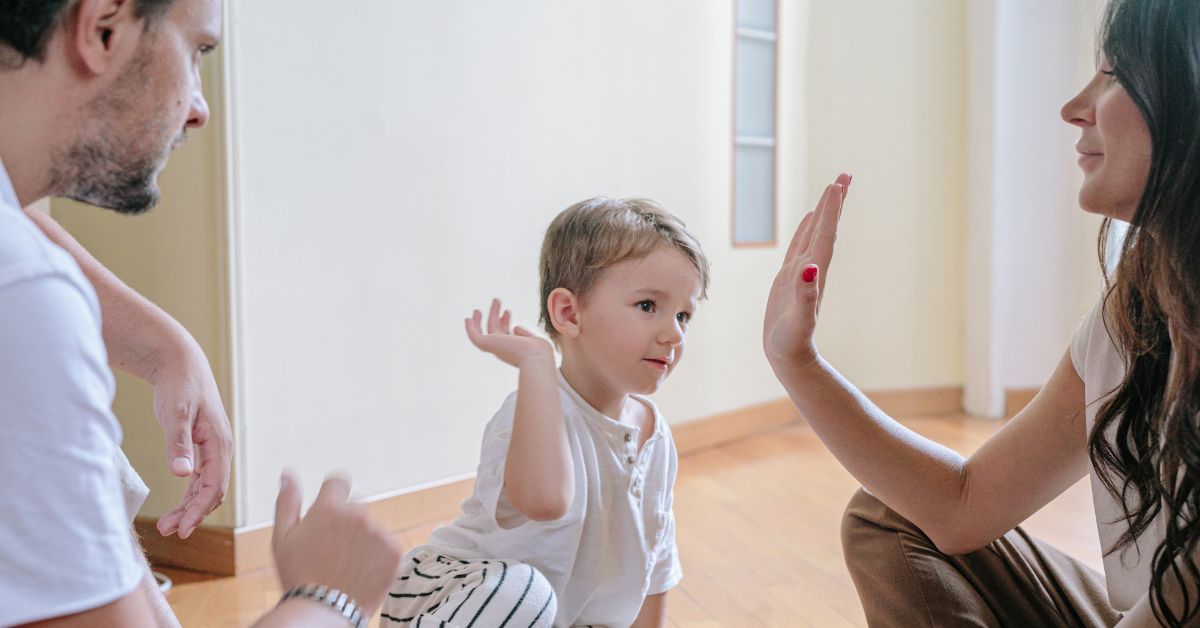What Are Successful Positive Discipline Techniques for Children?
To guide your child positively, establish clear rules and consequences, utilize rewards for good behavior, and maintain consistency in discipline. Teach problem-solving and foster empathy by setting a good example. Open communication is crucial for a strong parent-child bond. These techniques are essential for nurturing your child’s growth and wellbeing.
Key Takeaways
- Set clear expectations and consequences.
- Use positive reinforcement for desired behaviors.
- Practice consistent discipline with clarity.
- Teach problem-solving skills for long-term success.
- Encourage empathy and understanding in discipline.
Setting Clear Expectations

When establishing clear expectations for your child, make certain that they understand both the rules and the consequences that follow. Consistent boundaries are crucial in helping your child understand what’s expected of them. By setting clear and consistent rules, you provide a framework for your child to follow, promoting a sense of security and predictability in their environment.
Effective communication plays an essential role in this process. Clearly explain the rules to your child, using language that’s appropriate for their age and level of understanding. Encourage them to ask questions if they’re unsure about anything.
Additionally, be sure to communicate the consequences of not following the rules in a calm and rational manner.
Using Positive Reinforcement

Utilizing positive reinforcement techniques in your parenting approach is crucial to encourage and reinforce desired behaviors in your child. Implementing a reward system can be a powerful tool in shaping your child’s behavior positively. Consider creating a behavior chart where your child can visually track their progress and see the rewards they can earn.
When employing positive reinforcement, consistency and clarity about the behaviors you’re rewarding are key. Praise and rewards should be given immediately after the desired behavior to reinforce the connection between the action and the positive outcome. This helps your child understand what behaviors lead to positive consequences, encouraging them to repeat those actions in the future.
Practicing Consistent Discipline

When it comes to raising well-behaved children, consistency is key.
Setting clear expectations and following through with a firm yet kind approach can help your child understand boundaries and consequences.
Consistent discipline helps create a safe and structured environment where your child can thrive.
Clear Expectations Set
Consistently setting clear expectations for your child is key to implementing positive discipline techniques effectively. Effective communication and boundary setting are fundamental aspects of this practice. When you clearly communicate your expectations to your child, they understand what’s required of them and are more likely to follow through.
Research shows that children thrive in environments where expectations are well-defined and consistently enforced. To establish clear expectations, be specific about what behaviors are acceptable and unacceptable. Use simple language that your child can understand, and make sure they know the consequences of their actions.
Consistency is essential in reinforcing these expectations. By consistently setting and enforcing boundaries, you create a sense of structure and security for your child.
Firm and Kind Approach
To effectively implement a firm and kind approach in practicing consistent discipline with your child, it’s important to strike a balance between setting clear boundaries and showing empathy towards their feelings and needs. Gentle guidance and helpful boundaries are key elements of this approach. When setting limits or correcting behaviors, remember to do so with love and understanding. Firm boundaries can provide children with a sense of security and structure, helping them understand what’s expected of them.
Loving discipline involves being firm in your expectations while also being responsive to your child’s emotions. It’s essential to communicate openly and honestly with your child, explaining the reasons behind rules and consequences. By demonstrating empathy and compassion, you can strengthen your bond with your child while teaching valuable lessons about respect and responsibility.
Consistency is crucial in practicing this approach, as it helps children understand the importance of following rules and the predictability of consequences. Remember, being firm and kind in your discipline approach can promote positive behavior and nurture a healthy parent-child relationship.
Teaching Problem-Solving Skills

Developing problem-solving skills in children is essential for their long-term success and resilience. Engaging in problem-solving activities and conflict resolution exercises can help children learn how to navigate challenges effectively. Encouraging children to think critically and come up with solutions on their own empowers them to tackle issues independently in the future.
One effective way to teach problem-solving skills is by engaging children in role-playing scenarios where they can practice resolving conflicts or finding solutions to different situations. This hands-on approach allows children to understand the consequences of their actions and learn how to make thoughtful decisions.
Additionally, providing children with opportunities to work collaboratively on projects or tasks can enhance their problem-solving abilities. By working in teams, children learn to communicate effectively, consider different perspectives, and brainstorm creative solutions together.
Encouraging Empathy and Understanding
Encouraging empathy and understanding in children is essential for their social and emotional development. By cultivating empathy skills, you can help your child comprehend and relate to the feelings of others.
Teaching understanding through actions, such as modeling kindness and compassion, can have a lasting impact on how children interact with the world around them.
Cultivating Empathy Skills
Cultivating empathy skills in children involves fostering a deep understanding of others’ feelings and perspectives. Empathy development is vital for children to learn how to relate to others with compassion and kindness. Research shows that children who practice empathy are more likely to have healthier relationships, increased emotional intelligence, and better conflict resolution skills.
One effective way to promote empathy is through compassionate discipline. Instead of resorting to punishment, try to understand the underlying emotions behind your child’s behavior. Encourage them to express their feelings and perspective, and actively listen without judgment. By acknowledging their emotions, you validate their experience and teach them to take into account the feelings of others.
Modeling empathy is also essential. Show your child how to empathize by demonstrating understanding and kindness in your interactions with others. Encourage them to think about how their actions impact those around them.
Teaching Understanding Through Actions
To instill empathy and understanding in children, demonstrate compassion and kindness through your everyday actions. Children learn by observing the behavior of adults around them, making your role modeling essential in shaping their understanding of empathy.
Show them how to be kind and considerate by actively listening to their thoughts and feelings. When you practice active listening, you teach children the importance of truly understanding others’ perspectives and emotions.
By consistently showing empathy in your interactions with others, you provide children with a powerful example to follow. Your actions speak louder than words, and children are more likely to mirror your behavior when they see you approaching situations with empathy and understanding.
Remember that children absorb information like sponges, so the way you demonstrate empathy in your daily life can have a lasting impact on their development.
Through role modeling and active listening, you can help children cultivate empathy and understanding, setting them on a path towards building strong, compassionate relationships with others.
Establishing Open Communication
Establishing open communication with your child is essential for building a strong and trusting relationship. Active listening plays a vital role in fostering this open channel of communication. When you actively listen to your child, you show that you value their thoughts and feelings, creating a safe space for them to express themselves.
This practice not only helps in understanding your child better but also strengthens the bond between you.
Trust building is another key aspect of establishing open communication. By being honest, reliable, and supportive, you can cultivate trust with your child. Trust forms the foundation for effective communication, as it allows your child to feel secure in sharing their concerns and experiences with you.
Encouraging open communication through active listening and trust building can lead to a deeper connection with your child. Remember, creating a safe and understanding environment where your child feels heard and valued is essential for their emotional well-being and overall development.
Frequently Asked Questions
How Can Parents Handle Discipline Disagreements Between Themselves?
When disagreements arise, prioritize effective communication with your partner. Listen actively, express your thoughts calmly, and aim for compromise. Discuss your perspectives openly, seeking common ground to guarantee discipline decisions align and benefit your child.
What Strategies Work Best for Children With Special Needs?
When dealing with children with special needs, it’s essential to focus on individualized strategies for behavioral challenges. Tailored approaches that include effective communication techniques can make a significant difference in guiding and supporting these children.
Is It Possible to Use Positive Discipline With Teenagers?
Managing teenage rebellion and communication challenges can be tough, but positive discipline is possible. Stay patient, listen actively, set clear expectations, and enforce consequences consistently. Building trust and understanding is key.
How Can Parents Deal With Public Tantrums Effectively?
When dealing with public tantrums, it’s essential to stay calm and redirect attention. Set clear boundaries and consistently follow through with consequences. By remaining composed, redirecting focus, and enforcing limits, you can navigate these situations effectively.
What Role Do Extended Family Members Play in Positive Discipline?
When it comes to positive discipline, grandparent involvement can offer valuable support and consistency. Setting discipline boundaries together can create a united front. Cousin influence in family dynamics can also reinforce positive behavior and values.
Conclusion
To sum up, by setting clear expectations, using positive reinforcement, practicing consistent discipline, teaching problem-solving skills, encouraging empathy and understanding, and establishing open communication with your child, you can successfully implement positive discipline techniques.
These strategies have been shown to foster a healthy and respectful relationship between you and your child, while also promoting their overall development and well-being.
Remember, positive discipline isn’t only effective, but also a compassionate approach to guiding and nurturing your child.

Chad Adan Kace, a young dad from Vermont, shares his parenting journey with a touch of humor and lots of love. Father to a lively baby, he explores the joys and challenges of fatherhood through his stories.







